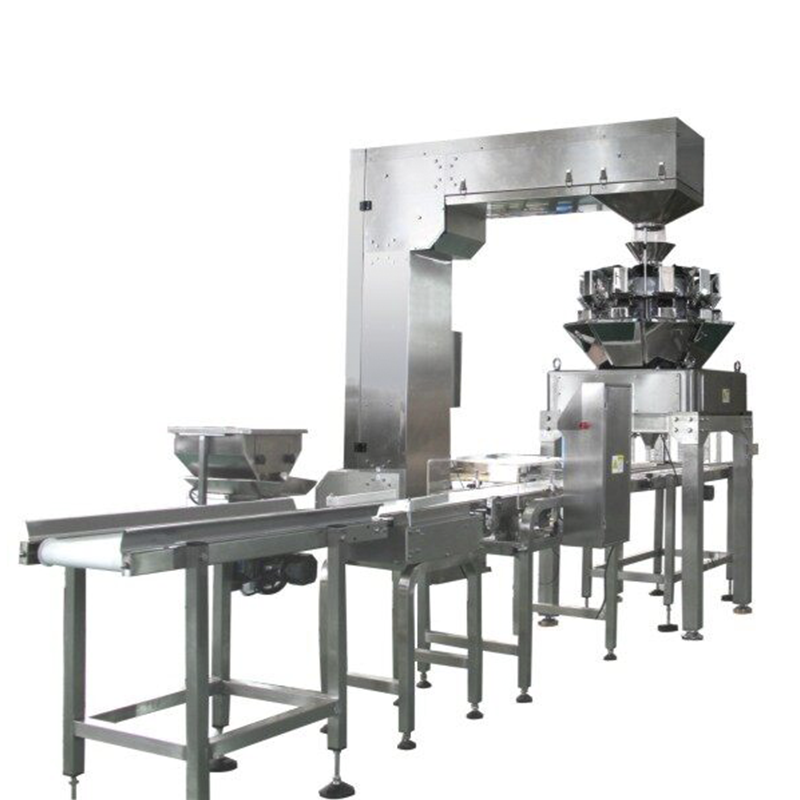Combination Weighing Unveiled: A Comprehensive Exploration
Introduction
In the dynamic landscape of industrial processes, the concept of combination weighing has emerged as a cornerstone for precision and efficiency. This article delves into the intricacies of combination weighing, shedding light on its working principles, applications across diverse industries, and comparative advantages.
Working Principles of Combination Weighing Machines
At the heart of combination weighing lies a sophisticated interplay of technology and mechanisms. The working principle involves the utilization of advanced sensors, load cells, and algorithms. These components work synergistically to ensure the accurate measurement of weights, enabling industries to optimize their production processes. The working principle of combination weighing machines is rooted in the ability to distribute weight intelligently among multiple bins, ensuring a more accurate representation of the actual weight of the product.
Applications of Combination Weighing
Combination weighing finds its applications across a spectrum of industries, ranging from food to pharmaceuticals and manufacturing. In the realm of food, technology proves invaluable in precisely weighing various ingredients, enhancing the quality of end products. For instance, in the confectionery industry, where the precise combination of ingredients is crucial for taste and texture, combination weighing ensures consistency. The pharmaceutical sector benefits from the accuracy of combination weighing in dosage formulation, ensuring the safety of medications through precise measurements. Moreover, in manufacturing, this technology streamlines the packaging of diverse products, optimizing overall efficiency. This includes industries like electronics, where components of varying sizes and weights are efficiently sorted and packaged using combination weighing.
Advantages and Disadvantages
The advantages of employing combination weighing are multifaceted. It not only guarantees precise measurements but also significantly reduces waste by ensuring optimal packaging. The technology's ability to adapt to different product characteristics adds a layer of versatility that traditional weighing methods often lack. However, businesses considering the adoption of combination weighing must weigh these advantages against certain limitations. The initial investment cost, though justified by long-term gains, can be a barrier for smaller enterprises. Additionally, the need for periodic maintenance to uphold accuracy emphasizes the importance of a robust maintenance strategy.
Comparison with Other Weighing Methods
A comparative analysis highlights the superiority of combination weighting in certain scenarios. Unlike traditional weighing methods, combination weighing excels in situations where a high degree of accuracy is paramount. This is particularly evident in industries such as agriculture, where the variability in the weight of harvested produce requires a dynamic and precise weighing approach. The versatility of this technology allows it to outperform others, particularly in industries where variability in product weight is a challenge. In warehouses handling a diverse range of products, combination weighing ensures efficient sorting and packaging, outperforming traditional methods.
Quality Control and Accuracy
In the realm of quality control and accuracy, combination weighing plays a pivotal role. It not only meets regulatory standards but surpasses them, ensuring products meet stringent quality requirements. In the automotive industry, where precise measurements are critical for manufacturing components, combination weighing contributes to maintaining high-quality standards. The technology's ability to minimize errors in packaging adds an extra layer of assurance in industries where compliance with quality standards is non-negotiable.
Latest Technological Developments
The landscape of combination weighing is continually evolving, with recent technological developments pushing the boundaries of efficiency and precision. Advanced machine learning algorithms and real-time data analytics are being integrated, enhancing the capabilities of combination weighing machines. This includes the incorporation of AI-driven predictive maintenance, ensuring proactive identification and resolution of potential issues. These developments underscore the importance of staying abreast of technological advancements in this field, as businesses can leverage these innovations to further enhance their production processes.
Cost-Benefit Analysis
A meticulous cost-benefit analysis is essential for businesses contemplating the adoption of combination weighing. While the initial investment may seem substantial, the long-term benefits, including reduced waste, enhanced efficiency, and improved product quality, often outweigh the upfront costs. In the aerospace industry, for example, where precision is critical, the cost-benefit analysis leans heavily towards the adoption of combination weighing for accurate weighing of components. The upfront investment is justified by the prevention of costly errors and rework in the production process.
Conclusion
In conclusion, combination weighing stands as a testament to the continuous evolution of industrial processes. Its working principle and diverse applications underscore its significance across various domains. By embracing the advantages, addressing limitations, and staying attuned to technological advancements, businesses can unlock the full potential of combination weighing, ushering in a new era of precision and efficiency. The synthesis of advanced technology, real-world applications, and a strategic approach to implementation position combination weighing as a transformative force in the landscape of industrial weighing.


